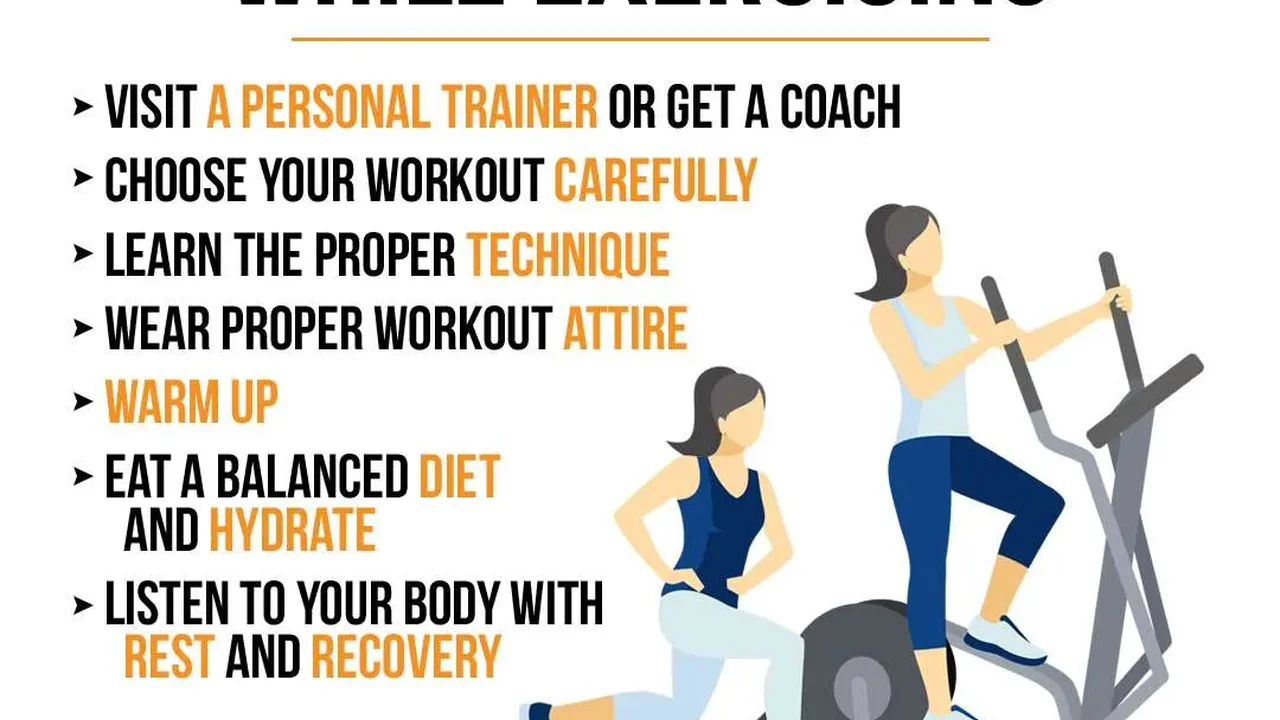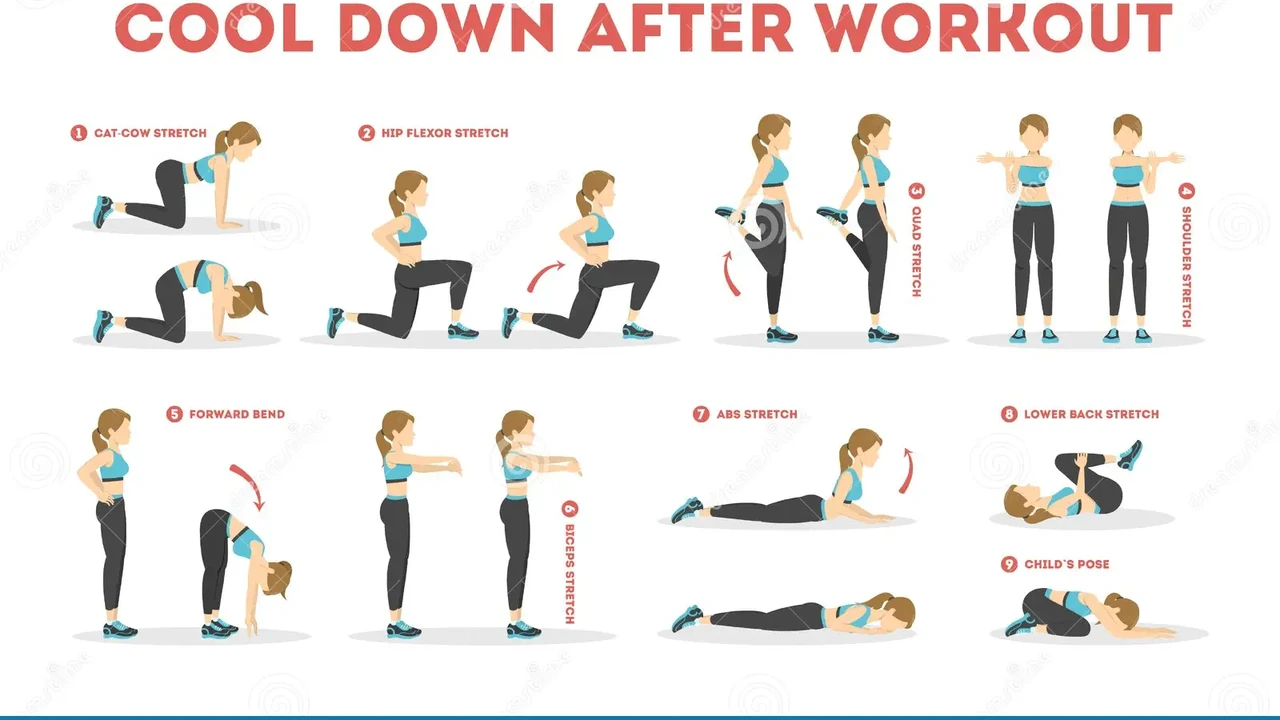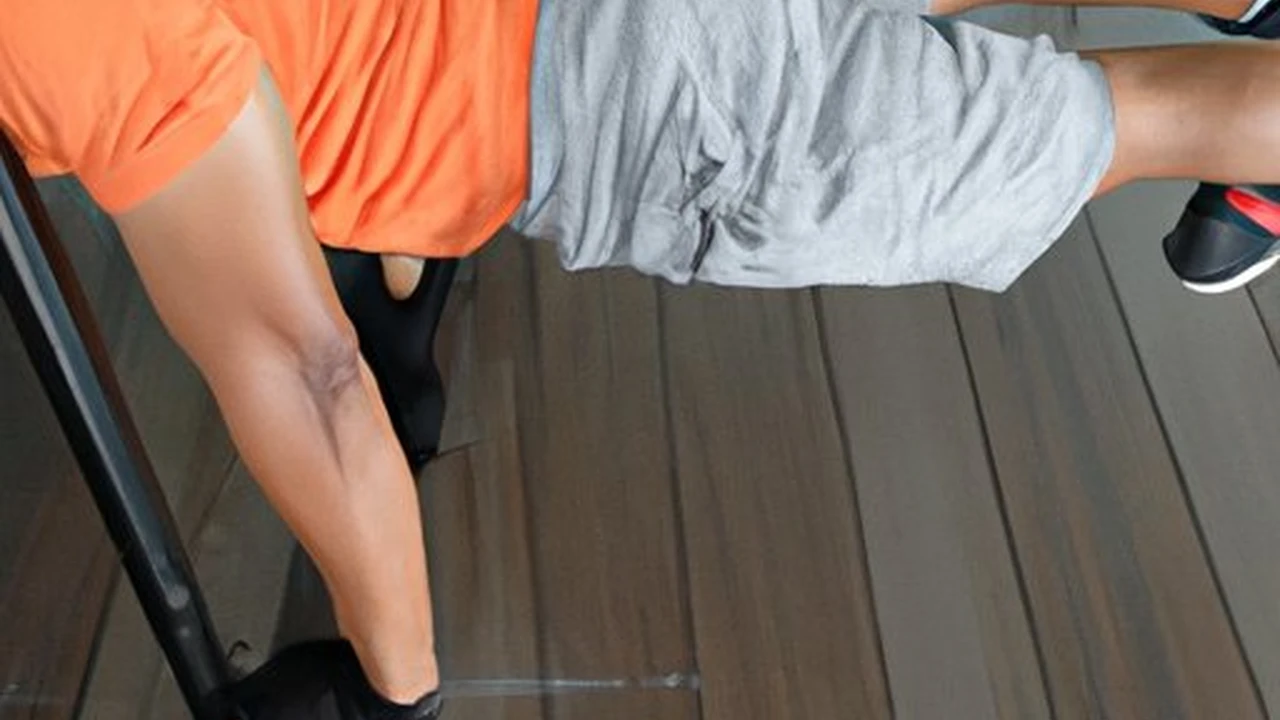Common Street Workout Injuries_ Prevention Tips

Understanding Street Workout Injuries A Comprehensive Guide
Street workout, also known as calisthenics, has surged in popularity as a accessible and effective way to build strength, endurance, and overall fitness. Utilizing bodyweight exercises performed in outdoor environments, street workout offers a dynamic alternative to traditional gym workouts. However, like any physical activity, it comes with the risk of injury. Understanding these risks and implementing preventative measures is crucial for a safe and rewarding street workout experience.
The Rise of Street Workout and Its Appeal
The appeal of street workout lies in its simplicity and accessibility. Requiring minimal equipment – often just a pull-up bar or parallel bars – it can be performed virtually anywhere. This accessibility makes it particularly attractive to individuals seeking a cost-effective and convenient fitness solution. Furthermore, the emphasis on bodyweight movements promotes functional strength, improving everyday activities and reducing the risk of injury in other areas of life. The community aspect is also a huge draw, with groups forming in parks and public spaces, fostering a sense of camaraderie and shared motivation.
Common Street Workout Injuries An Overview
While street workout offers numerous benefits, it's essential to be aware of the potential injuries that can arise. These injuries often stem from improper form, inadequate warm-up, overtraining, or a lack of understanding of body mechanics. Here's a breakdown of some of the most common street workout injuries:
- Shoulder Impingement: This occurs when the tendons of the rotator cuff muscles become compressed, leading to pain and inflammation. Common causes include poor posture, overuse, and inadequate shoulder mobility.
- Elbow Tendonitis (Tennis Elbow or Golfer's Elbow): Inflammation of the tendons surrounding the elbow joint, often caused by repetitive movements and gripping activities.
- Wrist Pain and Carpal Tunnel Syndrome: Repetitive wrist movements and awkward hand positions can lead to wrist pain and, in severe cases, carpal tunnel syndrome, a condition affecting the median nerve in the wrist.
- Lower Back Pain: Improper form during exercises like pull-ups and dips can strain the lower back muscles, leading to pain and discomfort. Core weakness and lack of flexibility also contribute to this issue.
- Knee Pain: Exercises involving jumping and landing, such as box jumps and plyometrics, can put stress on the knees, potentially leading to pain and injury.
- Muscle Strains and Sprains: Overstretching or sudden movements can cause muscle strains (tears in muscle fibers) or sprains (ligament injuries).
Preventing Street Workout Injuries Proactive Strategies
Prevention is always better than cure. By implementing a few key strategies, you can significantly reduce your risk of injury and enjoy a long and healthy street workout journey.
The Importance of Proper Warm-Up and Cool-Down
A thorough warm-up is essential to prepare your muscles and joints for the demands of street workout. A dynamic warm-up, consisting of movements that mimic the exercises you'll be performing, is particularly effective. Examples include arm circles, leg swings, torso twists, and light cardio. A cool-down, involving static stretching and light cardio, helps to reduce muscle soreness and improve flexibility.
Mastering Proper Form Technique is Key
Proper form is paramount in street workout. Incorrect form not only reduces the effectiveness of the exercises but also significantly increases the risk of injury. It's crucial to learn the correct technique for each exercise before attempting more advanced variations. Consider working with a qualified coach or trainer to receive personalized guidance and feedback. Use mirrors to observe your form and record yourself to identify areas for improvement. Focus on controlled movements and maintaining proper posture throughout each exercise.
Progressive Overload Gradual Progression
Progressive overload is the gradual increase in the demands placed on your body over time. This principle is essential for building strength and muscle mass, but it must be applied carefully. Avoid increasing the intensity or volume of your workouts too quickly, as this can lead to overtraining and injury. Start with easier variations of exercises and gradually progress to more challenging ones as you get stronger. Listen to your body and allow adequate rest and recovery between workouts.
The Role of Strength Training and Flexibility
While street workout primarily focuses on bodyweight exercises, incorporating additional strength training and flexibility exercises can enhance your performance and reduce your risk of injury. Strength training helps to build a solid foundation of strength, while flexibility exercises improve range of motion and reduce muscle tightness. Focus on exercises that target the muscles used in street workout, such as pull-ups, dips, push-ups, and core exercises. Incorporate stretching exercises that target the shoulders, back, hips, and legs.
Nutrition and Hydration Fueling Your Body
Proper nutrition and hydration are essential for supporting your street workout efforts and preventing injuries. Ensure you're consuming a balanced diet that provides adequate protein, carbohydrates, and healthy fats. Protein is crucial for muscle repair and growth, while carbohydrates provide energy for your workouts. Healthy fats support hormone production and overall health. Stay hydrated by drinking plenty of water throughout the day, especially before, during, and after your workouts.
Listening to Your Body Rest and Recovery
One of the most important aspects of injury prevention is listening to your body. Pay attention to any pain or discomfort you experience during or after your workouts. Don't push through pain, as this can worsen the injury. Allow adequate rest and recovery between workouts to allow your muscles to repair and rebuild. Consider incorporating active recovery techniques, such as light cardio and stretching, to promote blood flow and reduce muscle soreness. Aim for at least 7-8 hours of sleep per night to support recovery and overall health.
Specific Street Workout Exercises and Injury Prevention
Let's delve into specific street workout exercises and discuss strategies for preventing injuries associated with each.
Pull-Ups Perfecting Your Technique
Pull-ups are a fundamental street workout exercise that targets the back, biceps, and shoulders. Common injuries associated with pull-ups include shoulder impingement, elbow tendonitis, and wrist pain. To prevent these injuries, focus on maintaining proper form. Keep your shoulders down and back, engage your core, and avoid swinging or using momentum to complete the exercise. Use a full range of motion, lowering yourself all the way down and pulling yourself all the way up. If you're unable to perform a full pull-up, start with assisted pull-ups using a resistance band or a pull-up machine. Consider using chalk to improve your grip and reduce the risk of wrist strain.
Dips Preventing Shoulder and Elbow Issues
Dips are another excellent street workout exercise that targets the chest, triceps, and shoulders. Common injuries associated with dips include shoulder impingement, elbow tendonitis, and wrist pain. To prevent these injuries, focus on maintaining proper form. Keep your elbows close to your body, avoid flaring them out to the sides. Lower yourself down until your elbows are at a 90-degree angle, and then press back up to the starting position. Avoid lowering yourself too far, as this can put excessive stress on your shoulders. If you're unable to perform a full dip, start with assisted dips using a resistance band or a dip machine. Ensure the dip bars are at a comfortable width to prevent shoulder strain.
Push-Ups Variations and Proper Alignment
Push-ups are a versatile exercise that can be performed anywhere. They target the chest, triceps, and shoulders. Common injuries associated with push-ups include wrist pain, shoulder impingement, and lower back pain. To prevent these injuries, focus on maintaining proper form. Keep your body in a straight line from head to heels, engage your core, and avoid sagging your hips. Lower yourself down until your chest touches the ground, and then press back up to the starting position. Avoid locking out your elbows at the top of the movement. If you're unable to perform a full push-up, start with push-ups on your knees or against a wall. Vary your grip width to target different muscle groups and reduce the risk of overuse injuries.
Muscle-Ups Mastering the Transition
Muscle-ups are an advanced street workout exercise that combines a pull-up and a dip. They require significant strength and coordination. Common injuries associated with muscle-ups include shoulder impingement, elbow tendonitis, and wrist pain. To prevent these injuries, it's crucial to master the pull-up and dip before attempting a muscle-up. Focus on developing a strong pull-up and dip foundation before attempting the transition. Practice the transition separately using assisted exercises or drills. Use a controlled and fluid motion throughout the exercise. Avoid using momentum or swinging to complete the exercise. Consider working with a qualified coach or trainer to learn the proper technique and prevent injuries.
Gear and Equipment Recommendations Enhancing Safety
While street workout requires minimal equipment, certain gear and equipment can enhance safety and improve performance.
Wrist Wraps Support and Stability
Wrist wraps provide support and stability to the wrist joint, reducing the risk of wrist pain and injuries. They are particularly useful for exercises that put stress on the wrists, such as push-ups, dips, and handstands. Look for wrist wraps that are adjustable and made from durable materials. Product Recommendation: Rip Toned Wrist Wraps. These wraps are highly rated for their durability and support. Use Case: Wear these during push-up variations or handstand practice. Product Comparison: Compared to cheaper wraps, Rip Toned offers superior support and longevity. Detailed Information: Available on Amazon for around $20. Pricing may vary.
Gloves Grip and Protection
Gloves provide grip and protection to the hands, reducing the risk of blisters and calluses. They are particularly useful for exercises that involve gripping bars, such as pull-ups and dips. Look for gloves that are comfortable, breathable, and provide good grip. Product Recommendation: Mava Sports Cross Training Gloves. These gloves offer excellent grip and protection. Use Case: Use these during pull-ups, dips, and bar work. Product Comparison: Compared to bare hands, these gloves prevent blisters and improve grip. Detailed Information: Available on Amazon for around $25. Pricing may vary.
Resistance Bands Assistance and Progression
Resistance bands can be used to assist with exercises, making them easier to perform. They can also be used to add resistance to exercises, making them more challenging. Resistance bands are particularly useful for beginners who are unable to perform full pull-ups or dips. Product Recommendation: INTEY Resistance Bands Set. This set offers a variety of resistance levels. Use Case: Use these for assisted pull-ups, dips, and stretching. Product Comparison: Compared to single bands, this set offers more versatility. Detailed Information: Available on Amazon for around $30. Pricing may vary.
Jump Rope Cardio and Coordination
A jump rope is a simple and effective tool for improving cardiovascular fitness and coordination. It can be used as part of your warm-up or cool-down, or as a standalone workout. Product Recommendation: DEGOL Skipping Rope with Ball Bearings. This rope is smooth and durable. Use Case: Use this for warm-up, cool-down, or cardio workouts. Product Comparison: Compared to basic ropes, this rope offers smoother rotations. Detailed Information: Available on Amazon for around $15. Pricing may vary.
Foam Roller Muscle Recovery and Flexibility
A foam roller is a tool used for self-massage, helping to release muscle tension and improve flexibility. It can be used to target specific muscle groups, such as the back, legs, and shoulders. Product Recommendation: AmazonBasics High-Density Round Foam Roller. This roller is durable and effective. Use Case: Use this for post-workout muscle recovery. Product Comparison: Compared to softer rollers, this roller provides deeper tissue massage. Detailed Information: Available on Amazon for around $20. Pricing may vary.
Addressing Specific Injury Concerns
Let's address specific injury concerns and provide targeted advice.
Managing Shoulder Pain Exercises and Stretches
Shoulder pain is a common complaint among street workout enthusiasts. To manage shoulder pain, focus on strengthening the rotator cuff muscles and improving shoulder mobility. Exercises such as external rotations, internal rotations, and scapular retractions can help to strengthen the rotator cuff muscles. Stretches such as cross-body arm stretches and doorway stretches can help to improve shoulder mobility. If you experience persistent shoulder pain, consult with a physical therapist or healthcare professional.
Relieving Elbow Pain Rest and Ice
Elbow pain, often in the form of tennis elbow or golfer's elbow, can be debilitating. To relieve elbow pain, rest the affected arm and avoid activities that aggravate the pain. Apply ice to the elbow for 15-20 minutes at a time, several times a day. Use a compression bandage to support the elbow and reduce swelling. Consider using a tennis elbow strap to provide additional support. Perform gentle stretching exercises to improve elbow mobility. If you experience persistent elbow pain, consult with a physical therapist or healthcare professional.
Alleviating Wrist Pain Strengthening and Support
Wrist pain can be caused by repetitive movements, poor form, or underlying conditions such as carpal tunnel syndrome. To alleviate wrist pain, strengthen the wrist muscles with exercises such as wrist curls and reverse wrist curls. Use wrist wraps to provide support and stability to the wrist joint. Avoid activities that aggravate the pain. If you suspect you have carpal tunnel syndrome, consult with a doctor for diagnosis and treatment.
Dealing with Lower Back Pain Core Strengthening and Posture
Lower back pain can be caused by weak core muscles, poor posture, or improper form during exercises. To deal with lower back pain, focus on strengthening the core muscles with exercises such as planks, bridges, and abdominal crunches. Maintain proper posture throughout the day, both when sitting and standing. Avoid lifting heavy objects with your back. If you experience persistent lower back pain, consult with a physical therapist or healthcare professional.
Knee Pain Management Proper Form and Support
Knee pain can be caused by overuse, improper form, or underlying conditions such as osteoarthritis. To manage knee pain, focus on maintaining proper form during exercises that put stress on the knees, such as squats and lunges. Use knee sleeves to provide support and stability to the knee joint. Avoid activities that aggravate the pain. If you experience persistent knee pain, consult with a physical therapist or healthcare professional.
The Mind-Body Connection in Injury Prevention
Don't underestimate the power of the mind-body connection in preventing injuries. Stress, anxiety, and lack of sleep can all contribute to muscle tension and increased risk of injury. Practice mindfulness techniques such as meditation and deep breathing to reduce stress and improve focus. Ensure you're getting adequate sleep to support recovery and overall health. Visualize yourself performing exercises with proper form and confidence. A positive mindset can significantly enhance your performance and reduce your risk of injury.
Long-Term Sustainability A Balanced Approach
The key to long-term sustainability in street workout is a balanced approach that incorporates proper training, nutrition, rest, and mental well-being. Avoid overtraining and listen to your body. Prioritize proper form and technique. Fuel your body with a balanced diet and stay hydrated. Allow adequate rest and recovery between workouts. Cultivate a positive mindset and practice mindfulness techniques. By adopting a balanced approach, you can enjoy the numerous benefits of street workout for years to come.
:max_bytes(150000):strip_icc()/277019-baked-pork-chops-with-cream-of-mushroom-soup-DDMFS-beauty-4x3-BG-7505-5762b731cf30447d9cbbbbbf387beafa.jpg)






